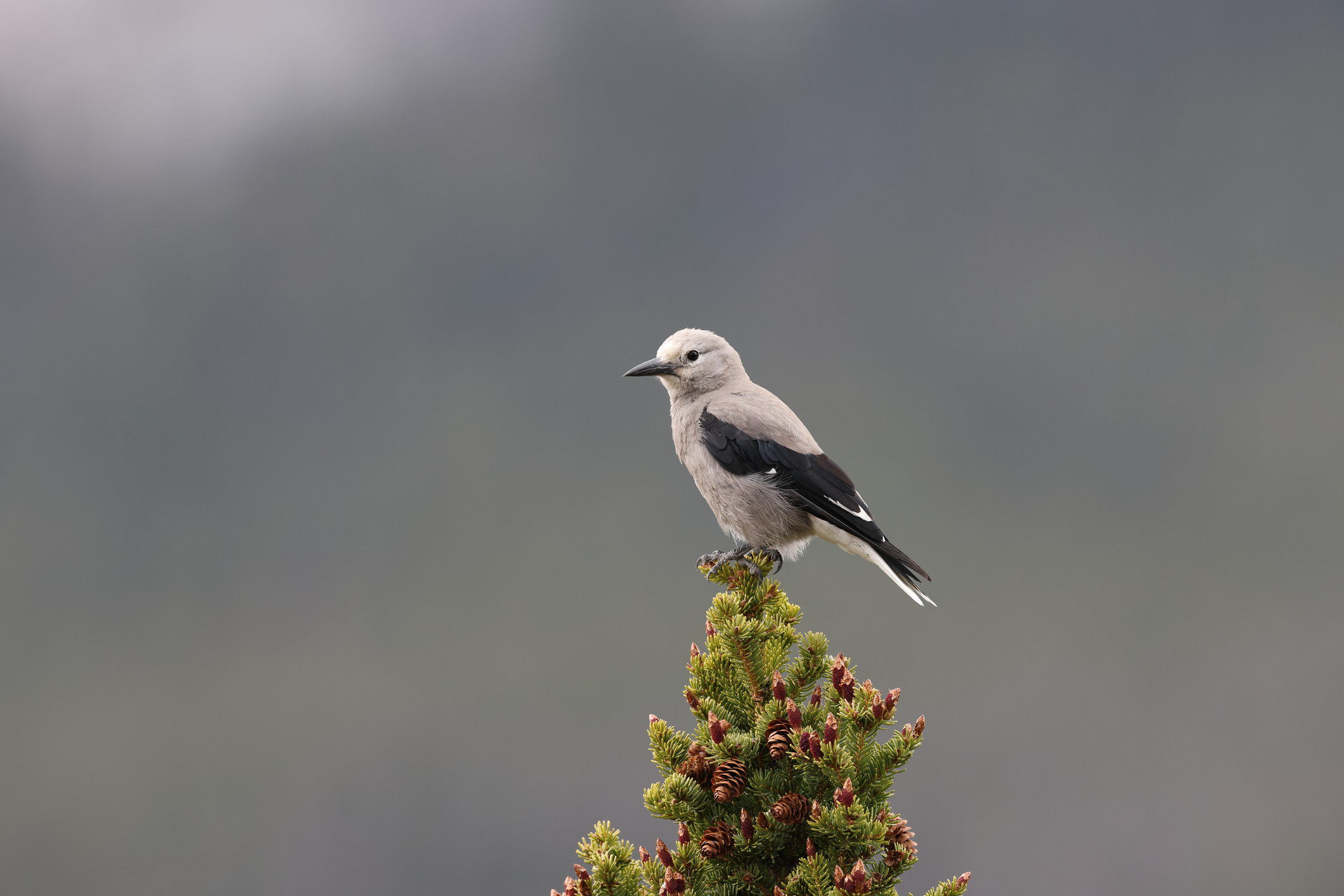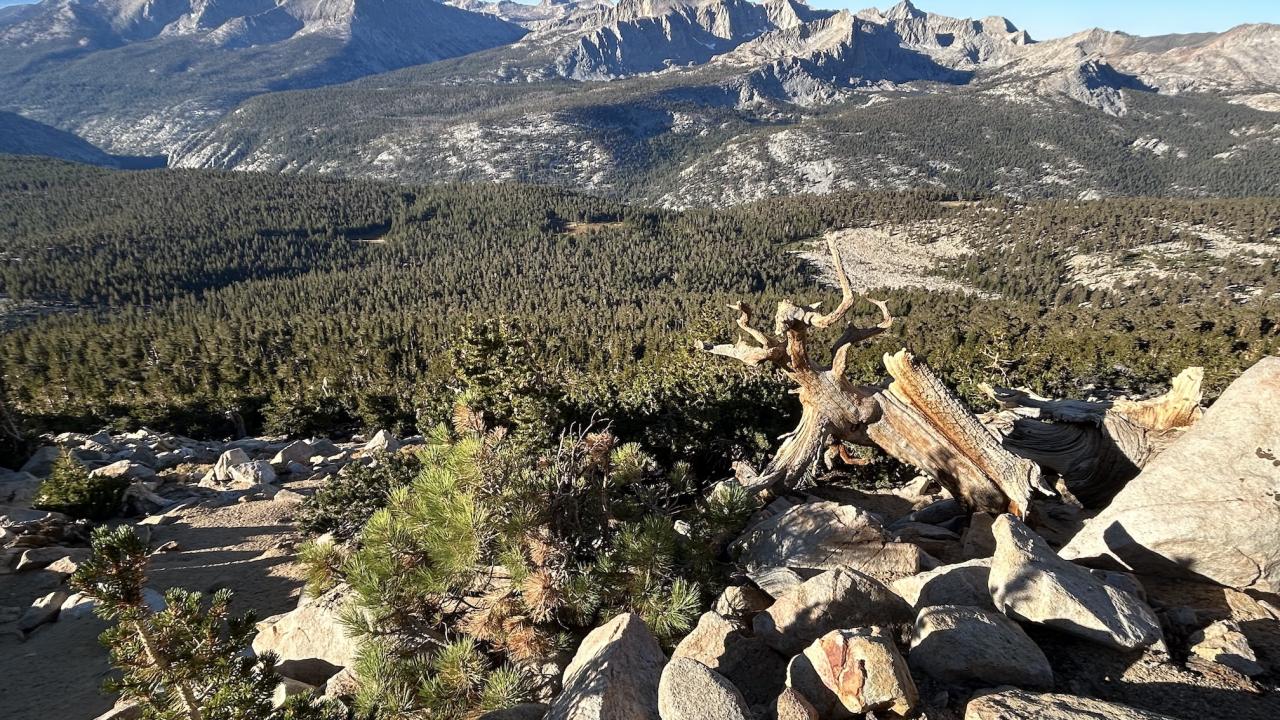UC Davis Professor Hugh Safford was hiking for pleasure in California’s High Sierra when he stumbled upon a new elevation record for the Jeffrey pine, which may now be the state’s highest-altitude tree. His serendipitous finding is published in Madroño, a journal of the California Botanical Society.
Last September, at timberline along the south slopes of Mount Kaweah in Sequoia National Park, Safford paused to admire a foxtail pine, then a lodgepole pine — trees he expected to see at such high elevations.
“Then I thought, ‘What’s that?’” said Safford, a forest ecologist in the UC Davis Department of Environmental Science and Policy. “I walk over, and it’s a Jeffrey pine! It made no sense. What is a Jeffrey pine doing above 11,500 feet?”


The Jeffrey pine grows in upper montane areas throughout the Sierra Nevada and is the most common tree found around Lake Tahoe and Mammoth Lakes. It is not considered a traditional subalpine tree species, which inhabit the most extreme high elevations. Yet, Safford recorded Jeffrey pines as high as 12,657 feet elevation. That is 1,860 feet higher in elevation than the highest Jeffrey pine on record and even higher than lodgepole, limber and foxtail pines.
To date, none of the six traditional subalpine forest species have been collected above 12,034 feet. This suggests the Jeffrey pine is California’s highest tree — at least for the moment. Safford’s work indicates that other species are growing higher than commonly used databases suggest.
The discovery signifies a changing climate amid California’s highest peaks. As snow melts earlier and air temperatures rise, Jeffrey pine seeds are germinating on land they previously found frozen and inhospitable.
Moving on up
During his hike-turned-science-expedition, Safford found and examined 14 Jeffrey pines above 11,800 feet elevation, some of which were at least 20 years old. At least a dozen others were visible, but he was unable to visit them. He and researchers from his lab will return to the southern Sierra Nevada this summer to further research Jeffrey pines in the subalpine zone and what is driving their movement.
For now, Safford strongly suspects a bird — the Clark’s nutcracker — is lending its well-known, high alpine gardening skills to the task of planting Jeffrey pine trees in the area. Much as this nutcracker does for whitebark pine trees, preliminary evidence suggests the bird carries fleshy Jeffrey pine seeds up the mountain from thousands of feet below, storing them in the High Sierra’s “refrigerator” for an early summer snack.

Earlier snowmelt and warmer temperatures enable some of these Jeffrey pine seeds to not only germinate but to establish themselves as a new population on the mountain.
Leapfrogging trees
Species attempting to stay ahead of climate changes by moving uphill are doing so far too slowly to keep pace, climate modeling literature suggests. Yet the models do not account for the role of seed dispersals by birds and other species amid shifting windows of ecological opportunity.
“I’m looking at trees surviving in habitats where they couldn’t before, but they’re also dying in places they used to live before,” Safford said. “They’re not just holding hands and walking uphill. This crazy leapfrogging of species challenges what we think we know about these systems reacting as the climate warms.”
Jeffrey pine trees are tolerant of both cold and drought, so while their lives along the slopes of Mount Kaweah are harsh and somewhat unexpected, their persistence is promising, Safford said.

Trees in real life
The discovery underscores a need for scientists to couple powerful technologies with direct observation. The trees Safford encountered were not detected by any available database, artificial intelligence platform, satellite or remote sensing technology.
“People aren’t marching to the tops of the mountains to see where the trees really are,” Safford said. “Instead, they are relying on satellite imagery, which can’t see most small trees. What science does is help us understand how the world functions. In this case, where you see the impacts of climate change most dramatically are at high elevations and high latitudes. If we want our finger on the pulse of how the climate is warming and what the impacts are, that’s where it will be happening first. We just need to get people out there.”
This summer, Safford and his students will be out there, hiking along Mount Whitney, Mount Kaweah and Sequoia-Kings Canyon National Parks, identifying seedlings, measuring and identifying trees, and helping to develop models of accurate elevations to better understand the changing landscape of the High Sierra.
Media Resources
- Hugh Safford, UC Davis Environmental Science and Policy, hdsafford@ucdavis.edu
- Kat Kerlin, UC Davis News and Media Relations, 530-750-9195, kekerlin@ucdavis.edu
Press kit of images. Download permitted with credit.
